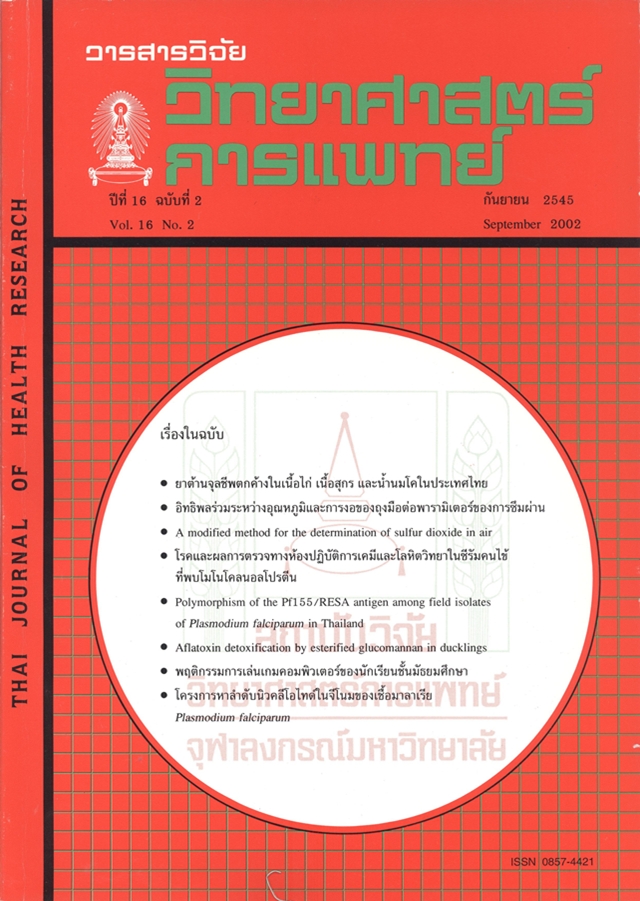Polymorphism of the Pf155/RESA Antigen among Field Isolates of Plasmodium falciparum in Thailand
Keywords:
Plasmodium falciparum, Pf155/RESA Antigen, polymorphism, sequence variantsAbstract
The sequence diversity of the blood stage antigen Pf155/RESA in Plasmodium falciparum was investigated in laboratory strains of the organism as well as in fields isolates collected from endemic areas of Thailand. The gene was cloned from an African isolate F32 and its nucleotide sequence was determined. Comparison with other isolates revealed a striking sequence conservation except in the variable region where a 6 amino acid replacement has occurred in FC27 compared to the F32 strain. These sequence variants were the only ones found in the range of laboratory clones and isolates tested. However, analysis of 168 field samples from Thailand demonstrated a higher degree of polymorphism in this region. The sequence variants could be devided into 10 groups and occurred with differing frequency among the field isolates. The most prevalent variant was the F-32 type which was present in 67% of the samples. The second most frequent variant was identical to the F-32 type, except for one amino acid replacement and occurred in 19% of the patients. The FC-27 type, was only rarely present, having a frequency of about 6%. The remaining variants IV-X were found in just 8% of the field samples. Polymorphism in the parasite population is thus more frequent in field isolates than in parasites grown in vitro. Whether this reflects any selective advantage for the different variants is not known.







